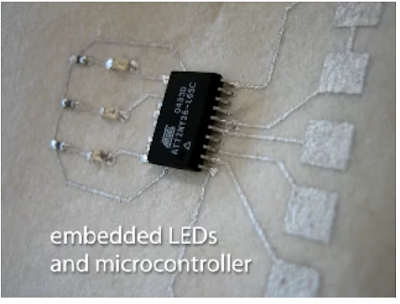If you’re new here, you may want to subscribe to my RSS feed to receive the latest Architectradure’s articles in your reader or via email. Thanks for visiting!
BodyNotes was created by the MIT Media Lab. It contributes to a series of projects that enhance the interaction between patients and healthcare practitioners. BodyNotes is a mobile tool that combines anatomical landmarks to physical objects as a mean for a patient to discuss body pain with her doctor.
Video
The video introduces Anna, an amputee who uses BodyNotes to track the pain and comfort she feels throughout the day when wearing her prosthetic limb. Anna can view visualizations and summaries of her reported pain by location, intensity, time, duration and activity.
This data is also accessible to Annas prosthetist. BodyNotes also allows remote, real-time collaboration.
During their session, Anna uses a photo to indicate the exact points where she feels pain. Since this screen is simultaneously seen by the prosthetist, and the interaction is synchronized, he can show what modifications Anna could do on her own.
BodyNotes enables advanced logging and telemedicine functionality on mainstream mobile phones. It has the potential to improve health care and communication, allowing patients and doctors to better spend their time by reducing the need for office visits.








